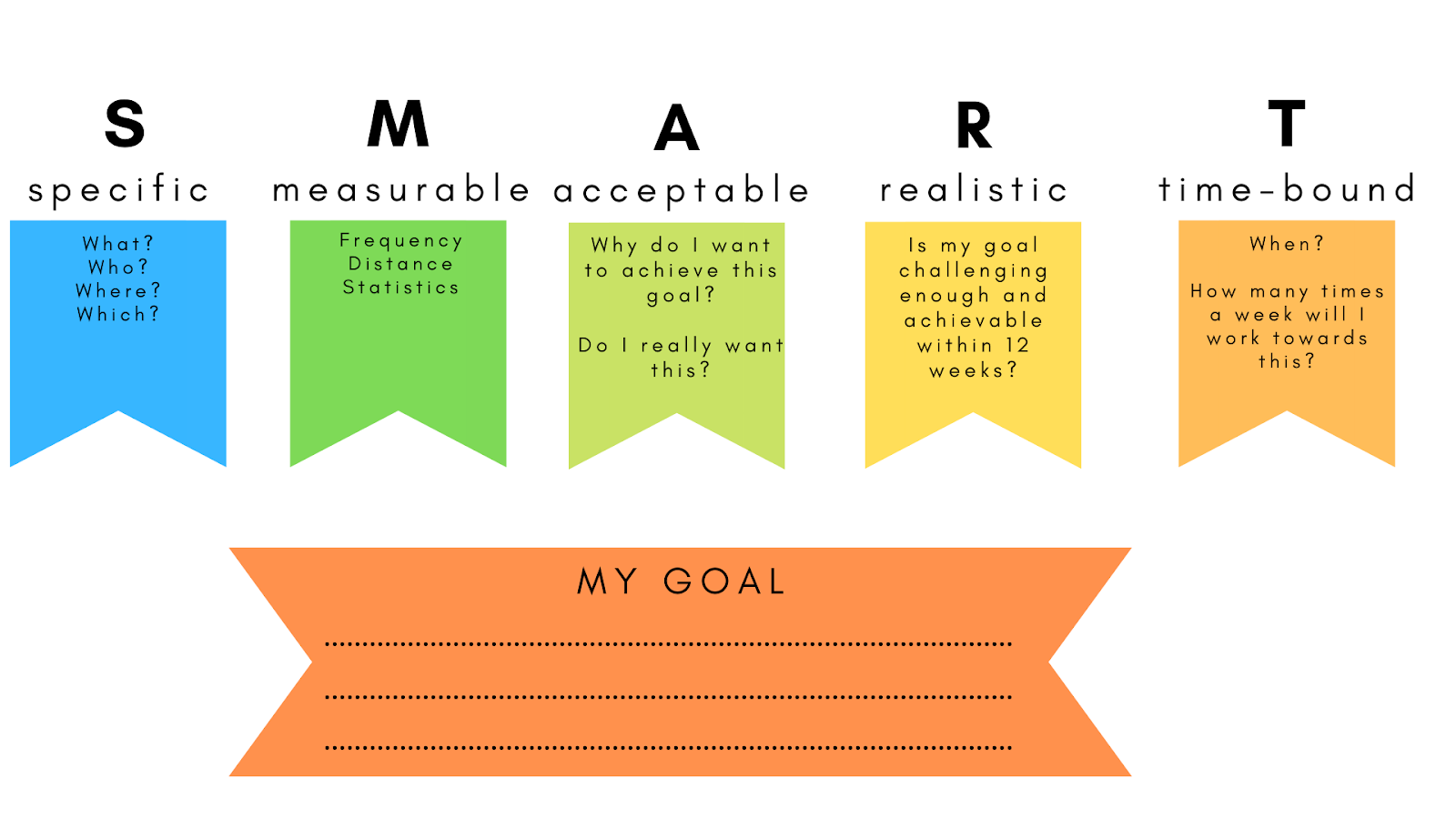And… we’re off! So, now what?
You have taken your fitness test and with our motto “to measure is to know” you now have an overview of your fitness.
Watch the video about viewing your fitness report on the Improver Platform here
Manual to pair your Fitbit
CUSTOMIZE YOUR PERSONAL HEART RATE ZONES IN YOUR FITBIT
Let Fitbit know your personal heart rate zones for the optimal tracking of your active minutes.
-
Go to the following website: https://www.fitbit.com/settings/profile and click at the very bottom under ‘advanced settings’ on ‘heart rate zones’.
- Now enter your lower and upper limits (running test: zone 4, walking test: zone 3 – zone 4)
- Click on ‘submit’.
OR via the fitbit app:
The SMART method
When starting a new challenge, it’s essential to be goal-oriented. Naturally, that means you need a goal; however, finding one can occasionally be a challenge in itself. The SMART method provides a solution to this conundrum. The simple criteria make it possible for you to efficiently set realistic goals – targets that you can also actually achieve. You really can turn your dreams into reality.
What does SMART mean?
SMART goals made their debut in a 1981 Management Review publication by George Doran, a consultant and director of corporate planning for the Washington Water Power Company. After significant research, he came to the conclusion that clear and achievable goals should meet five criteria:
- Specific – Is my goal clear and highly specific?
- Measurable – When has my goal been achieved? And how will I measure progress?
- Acceptable – Why do I want to achieve this goal, can I fully commit to it, and do I really want to?
- Realistic – Is my goal challenging enough and achievable within 12 weeks?
- Time-bound – When do I want to achieve my goal?
How to put SMART into practice
1. Specific
Your goal needs to be clear and highly specific. If not, you risk losing the stamina and motivation needed to make it to the finish line. For that reason, you need to answer the 4 Ws:
- What do I want to achieve?
- Who is involved?
- Where will I work towards these goals?
- Which strengths or weaknesses should I take into account?
2. Measurable
Setting measurable goals is key. That way you clearly see progress and won’t get discouraged. Some examples of measurable goals include:
- exercising 2x a week for 30 min (frequency)
- jogging or walking 5 km (distance)
- losing 10 kg (statistics)
- …
3. Acceptable
Inner drive is the key to an achievable goal. Make sure you know why you want to achieve your goal and that you’re willing to give it your all. Here, you should be able to provide a clear answer to questions such as:
- Why do I want to achieve this goal?
- Is my reason really genuinely relevant to my situation?
- Do I actually want to achieve this?
- Am I fully committed to making this happen?
- Is my goal meaningful?
4. Realistic
Choose a goal that you can achieve within the set time but make sure not to make it too easy either. Make it a challenge! Ask yourself the following questions:
- Is my goal challenging?
- Can I achieve the goal within the timeframe?
- Does it align with my other goals or needs?
- Do I have the resources and knowledge required to achieve my goal?
5. Time-bound
Ultimately, every goal is assigned a deadline. That will help keep your daily duties from getting in the way of your long-term goals. What’s more, a concrete deadline frequently provides that tiny bit more motivation and makes the home stretch feel shorter. Keep the criteria below in mind:
- When do I want to achieve this goal?
- What can I get done in 12 weeks?
- What can I get done in 6 weeks?
- What can I already achieve today?

